ecosystem-guides.com
....exploring the planet's ecosystems
SUBANTARCTIC
Ocean
The subantarctic oceans are cold but rich in oxygen, nutrients and sea birds and mammals...
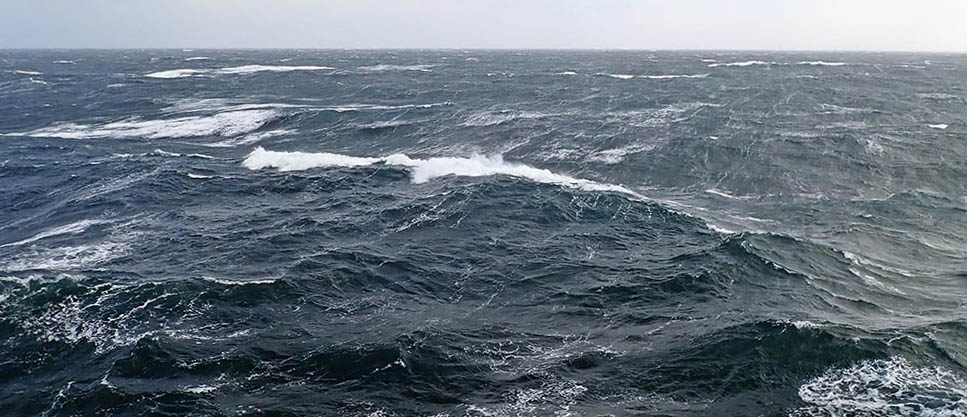
By far the biggest group of birds seen out on the Subantarctic oceans are the tubenoses. This is a large and diverse group of specialist seabirds. The largest in this group and one of the largest of all flying birds are the Albatross.
Even identifying between the 'Royal' and 'Wandering' group can be difficult at sea. Generally, the Royal usually does not have black on the tail while the Wandering may have black on the tail, the Royal has a more smoother head-to-bill transition while the Wandering is blockier, the Royal has coarser black and white colouration while the Wandering is smoother. If you get a closer look, one of the best differences is that the Royal has a darker edge to the inner edge of mandibles, producing a dark line along middle of bill.
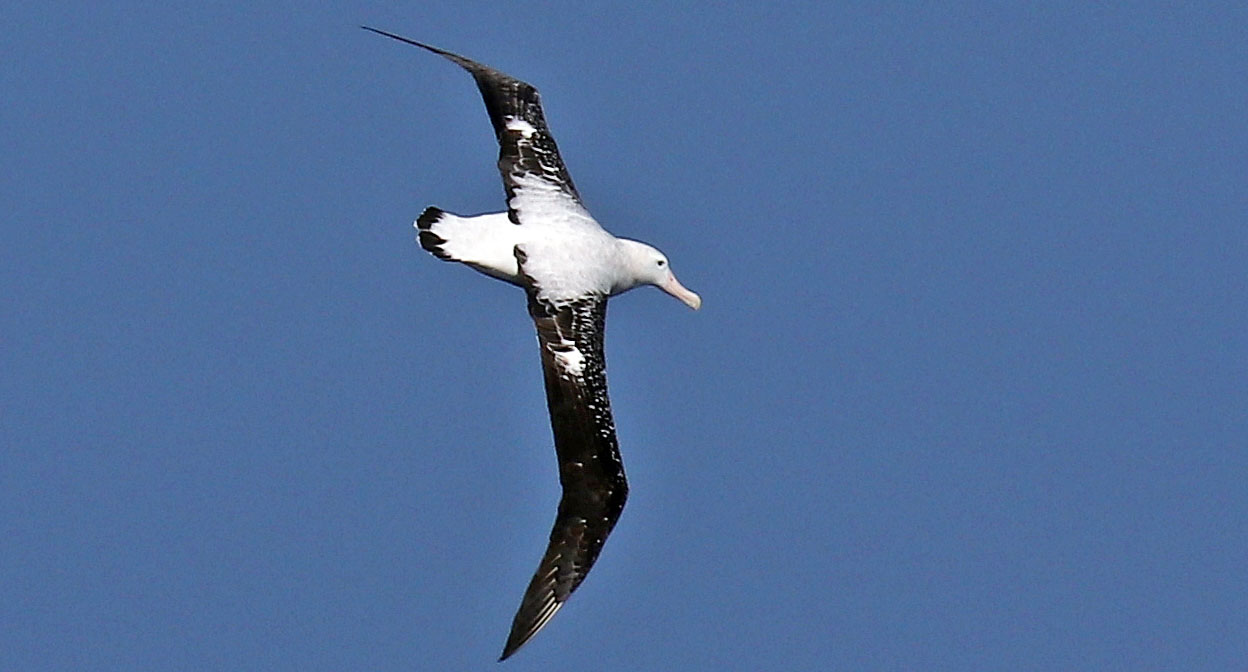 Diomedea exulans, 'Wandering Albatross'. Often considered a complex of species. (between Falklands and South Georgia)
Diomedea exulans, 'Wandering Albatross'. Often considered a complex of species. (between Falklands and South Georgia)The 'Mollymawk' Albatross Thalassarche, are smaller than the Great Diomedea Albatross. Unlike the latter birds, the Mollymawks have a dark back. The different species in the genus can usually be distinguished from each other by their slightly different coloured bills.
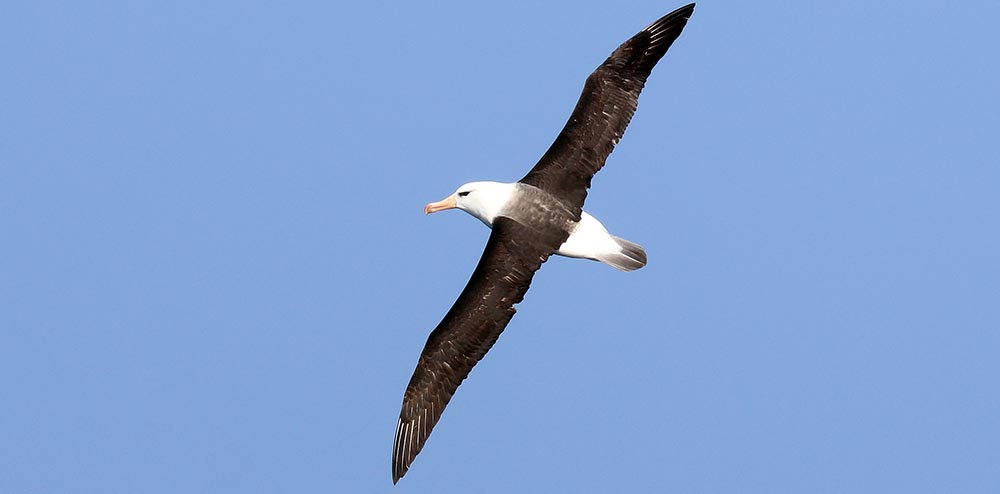 Thalassarche melanophris, 'Black-browed Mollymawk', view of upperside. Circumpolar: breeds southern South America and New Zealand, (between Falklands and South Georgia)
Thalassarche melanophris, 'Black-browed Mollymawk', view of upperside. Circumpolar: breeds southern South America and New Zealand, (between Falklands and South Georgia)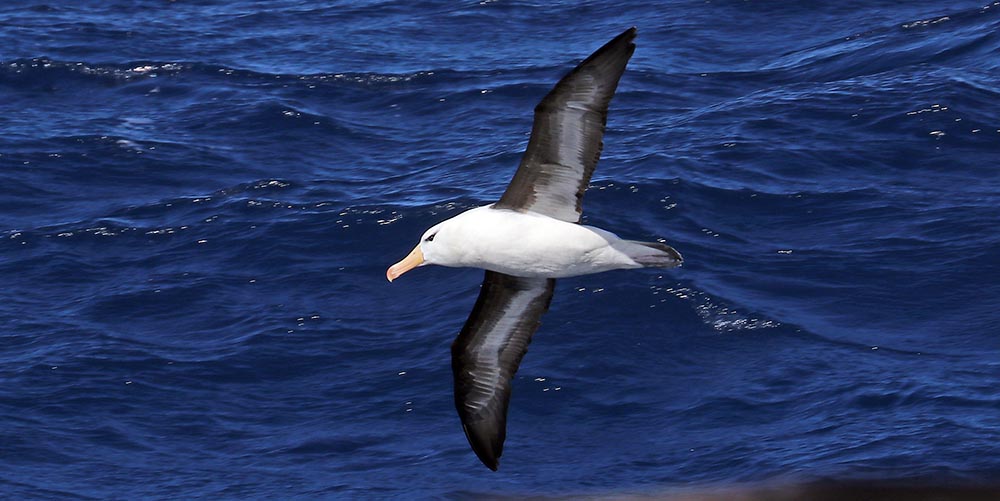 Black-browed Mollymawk, view of underside
Black-browed Mollymawk, view of undersideThere are many different types of medium-sized petrels.
One of the most regularly seen is Procellaria aequinoctialis, 'White-chinned Petrel'. The common name comes from a small patch of white underneath the base of the bill; this is not always visible in the field, but can be seen in the photograph below.
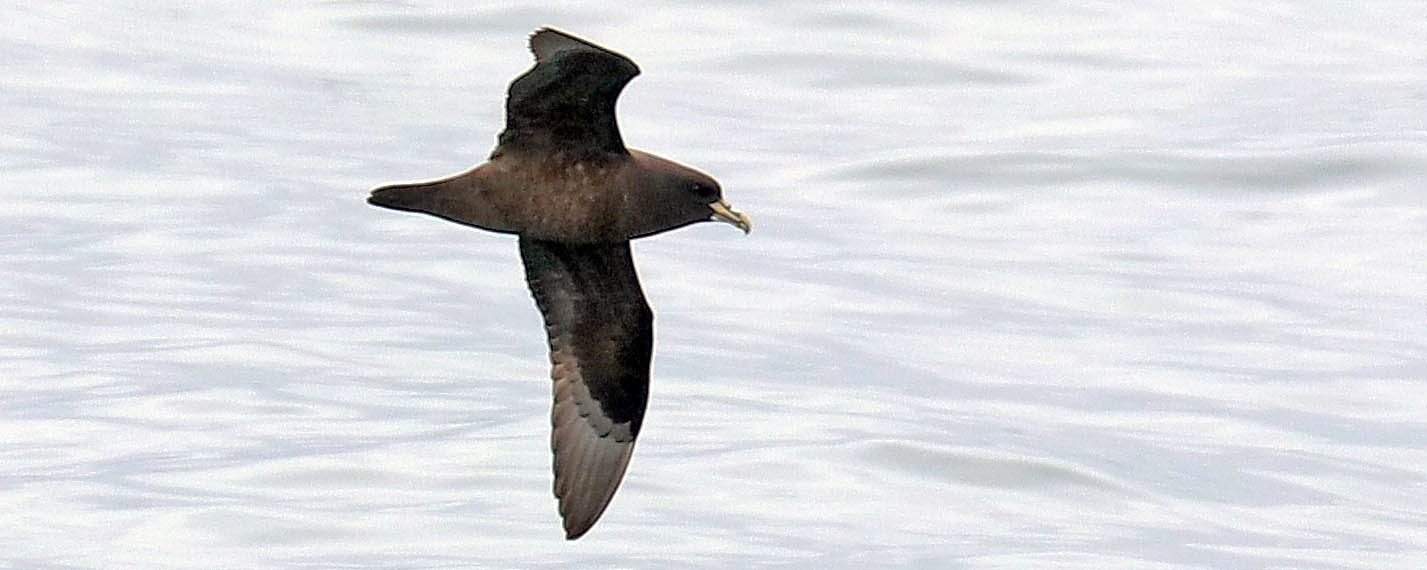 (Scotia Sea)
(Scotia Sea)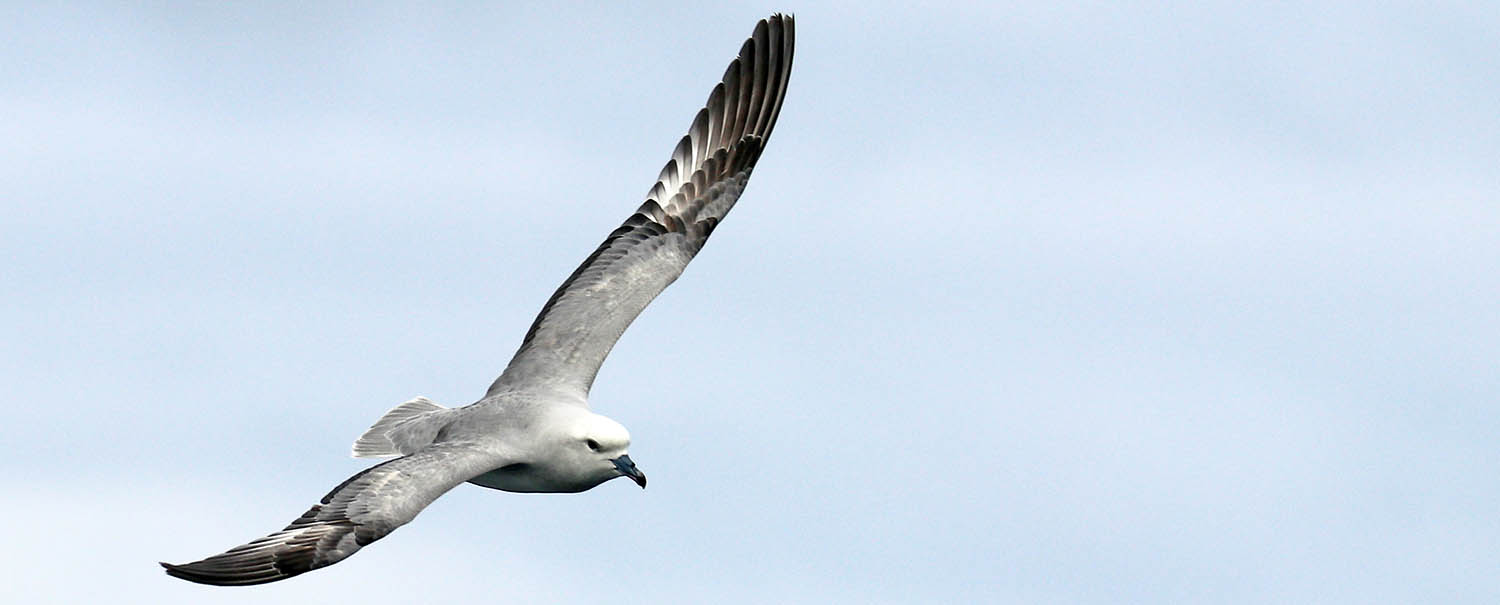 Fulmarus glacialoides, 'Southern Fulmar', (Scotia Sea)
Fulmarus glacialoides, 'Southern Fulmar', (Scotia Sea)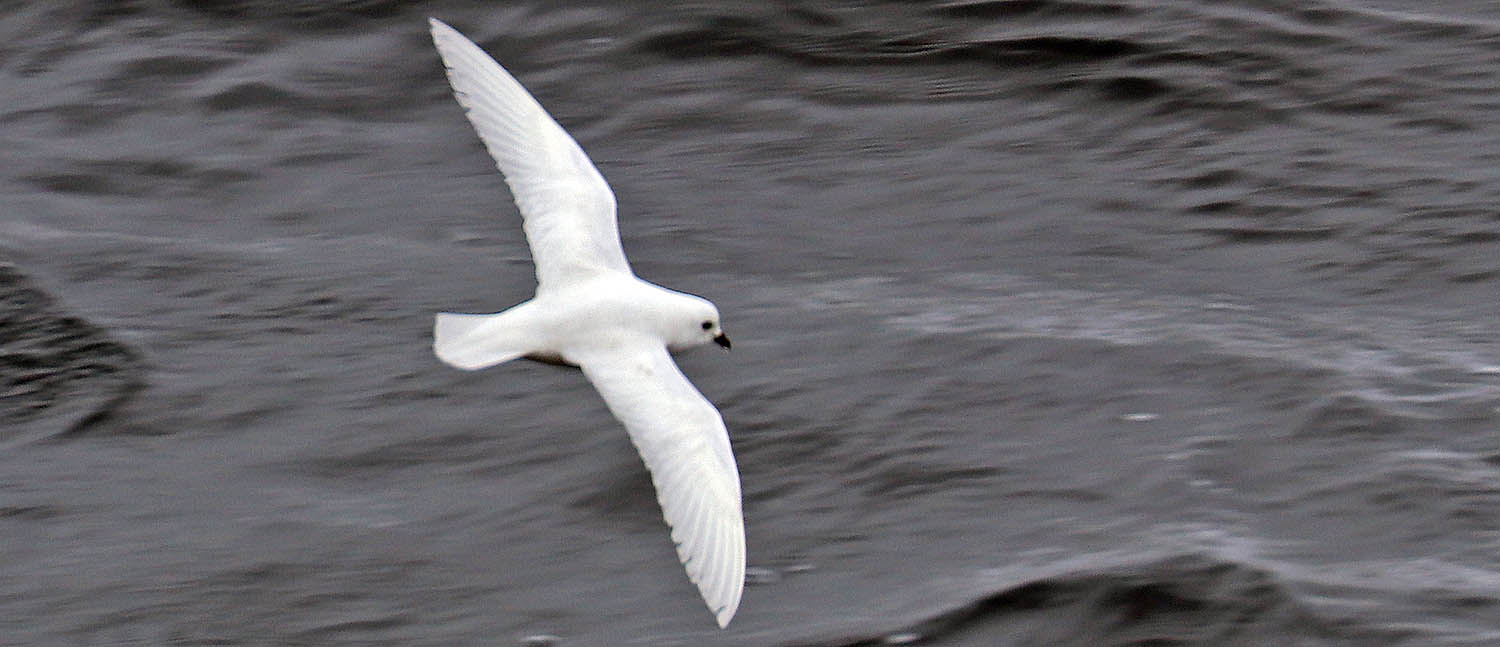 Pagodroma nivea, 'Snow Petrel', (Scotia Sea)
Pagodroma nivea, 'Snow Petrel', (Scotia Sea)Some of the Petrels almost grow as big as albatross - these are the Giant Petrels. The Northern has darker reddish tip to bill, Southern has greenish or lighter tip.
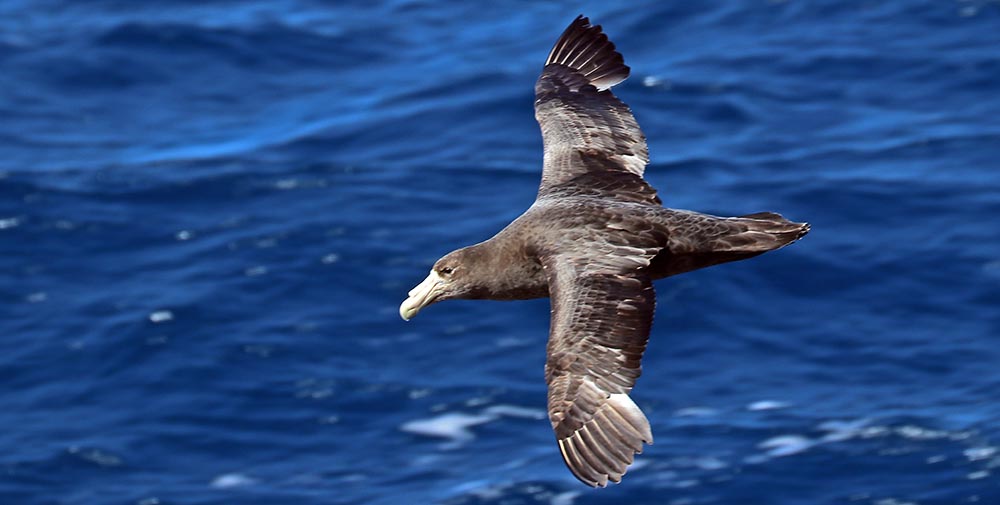 Macronectes giganteus, 'Southern Giant Petrel' (between South Georgia and Falklands)
Macronectes giganteus, 'Southern Giant Petrel' (between South Georgia and Falklands) Prions are very small and grey, usually with a dark "M" mark spread across wings and back. The species are difficult to tell apart, and identification often has to be based on what is likely to be in the area. Rhymes with iron, Pry-on, not Pree-on.
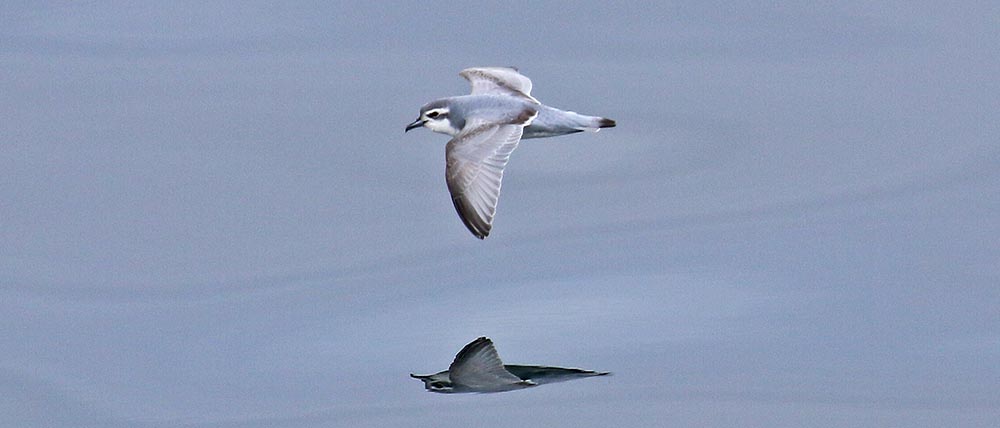 Pachyptila belcheri, 'Slender-billed Prion'. Long thin bill, large white eyebrow. (between Ushuaia and Falklands)
Pachyptila belcheri, 'Slender-billed Prion'. Long thin bill, large white eyebrow. (between Ushuaia and Falklands)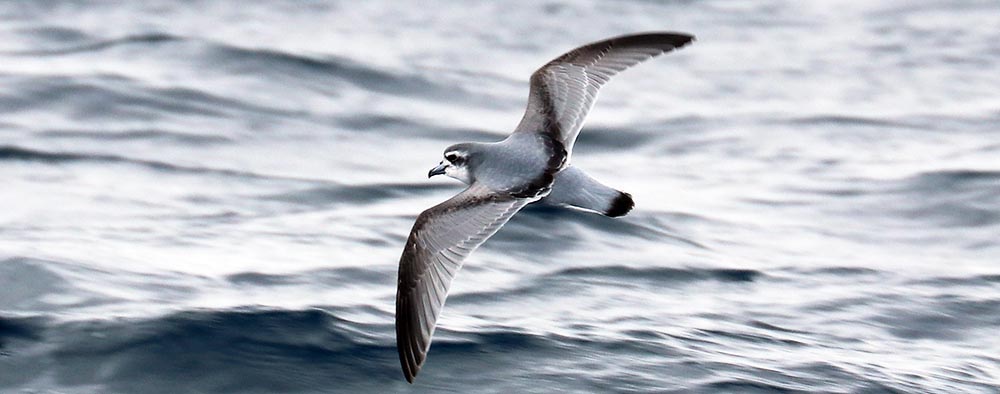 Pachyptila desolata, 'Antarctic Prion'. (Scotia Sea)
Pachyptila desolata, 'Antarctic Prion'. (Scotia Sea)There are four species of Diving Petrels, although the different species are very hard to tell apart. Very small stubby seabirds. Appear to be somewhat of a evolutionary convergent southern ocean equivalent of the northern hemisphere Puffins. They fly just above the surface, and smash into the water and fly out again (although you can see them enter the water, it is often hard to see where they exit). To me, their fluttery flight and stumpy body makes them look like 'hummingbird potatoes'.
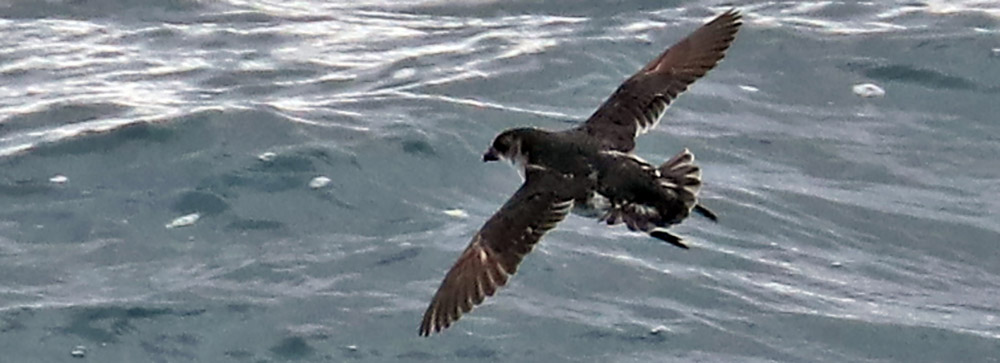 (Scotia Sea)
(Scotia Sea)When Storm Petrels are feeding they hover over the surface of the water. They have a distinct and delicate way of moving while doing this, that appears like dancing; it is called pattering.
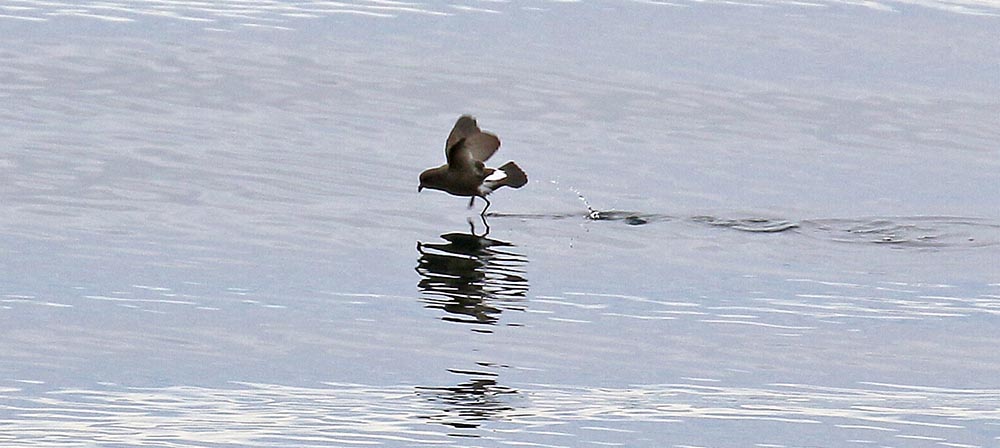 (off the Falklands)
(off the Falklands)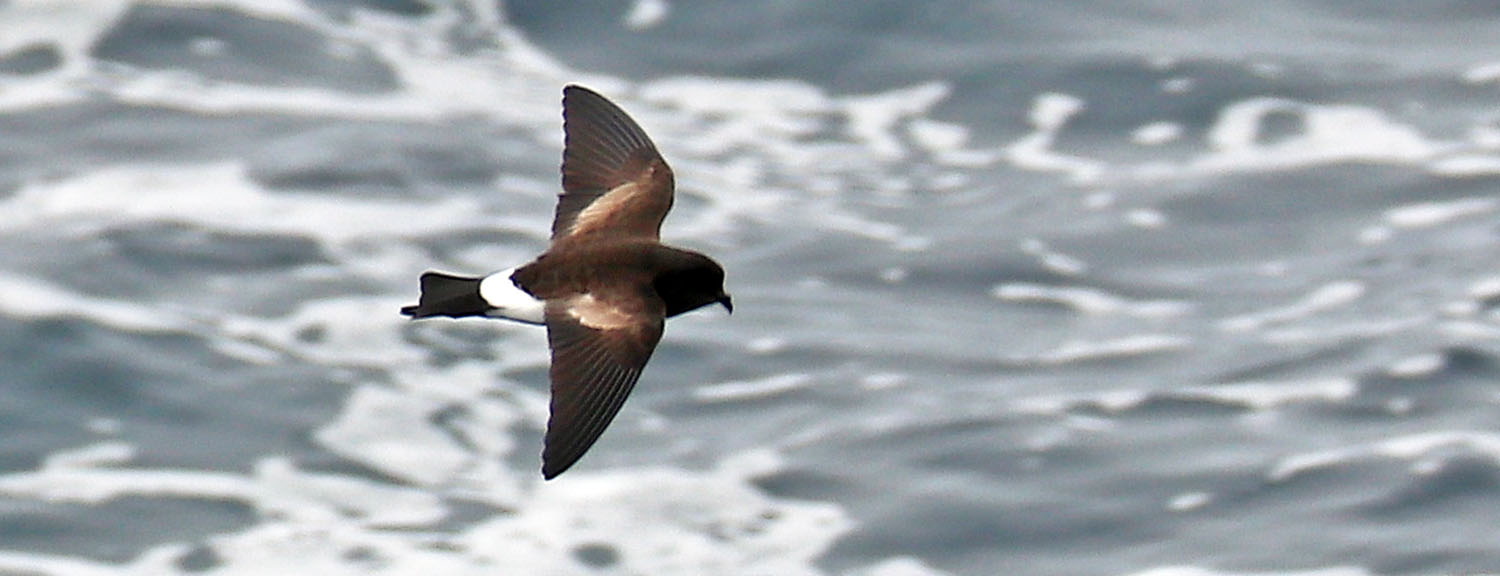 Oceanites oceanicus, 'Wilsons Storm Petrel'. The only 'southern' storm petrel that regularly ends up in the northern hemisphere. One of the most abundant birds in the world, (Scotia Sea)
Oceanites oceanicus, 'Wilsons Storm Petrel'. The only 'southern' storm petrel that regularly ends up in the northern hemisphere. One of the most abundant birds in the world, (Scotia Sea)Whales are common over summer in the Subantarctic waters. They can often be seen from a distance by their blow.
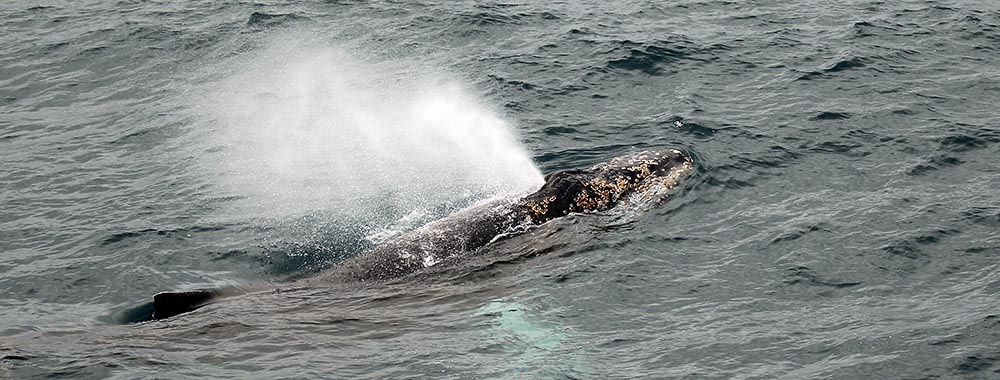
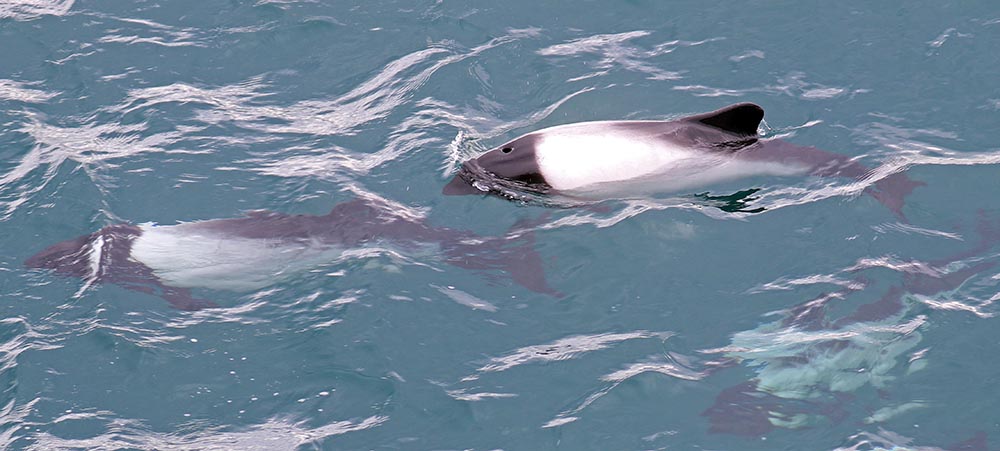 Cephalorhynchus commersonii, 'Commerson's Dolphin' (Saunders Island, Falklands)
Cephalorhynchus commersonii, 'Commerson's Dolphin' (Saunders Island, Falklands) Balaenoptera physalus, 'Fin Whale'. Very long whale, with small curved fin set very far back, (Scotia Sea)
Balaenoptera physalus, 'Fin Whale'. Very long whale, with small curved fin set very far back, (Scotia Sea) Megaptera novaeangliae, Humpback Whale 'hump back' and fin.
Megaptera novaeangliae, Humpback Whale 'hump back' and fin.Other related habitats...
Next to this cold ocean is the Subantarctic seashore, and just inland of these wildlife congregations is the Subantarctic tundra. Further south are the oceans and shores of Antarctica. At the other end of the Earth, the northern equivalents are the Arctic ocean & seashore and the Arctic tundra.



